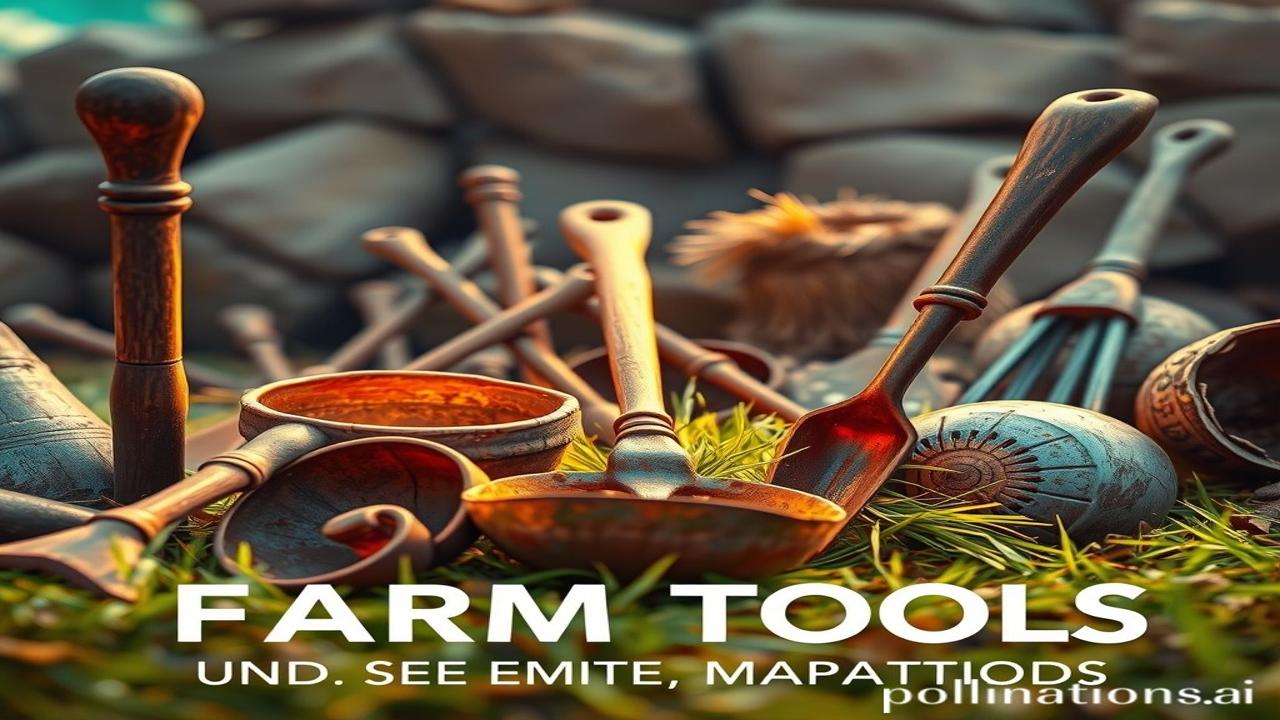Mitti ki Khushboo, Pasine ki Mehnat: Farm Tools – Then & Now
Kabhi socha hai, jab bijli nahi thi, tractor nahi the, toh kaise hamare purvaj apna pet bharte the? Kaise unhone itna anna ugaya ki aaj bhi hum kha rahe hain? Waqt ki dhool mein kuch aise hi sauz-o-samaan (tools and equipment) chhupi hain, jinse hamare kisaan bhaiyon ne dharti ko sona banaya. Chaliye, aaj unhi aazaron ki kahani sunte hain.
The Seed of History: Traditional Farm Tools – A Glimpse into the Past
Traditional farm tools, yaani purane zamaane ke kheti ke auzaar, koi ek cheez nahi hai. Yeh ek poora system hai. This system goes back thousands of years, even to the Indus Valley Civilization. Think back to 2500 BCE! Archaeologists have unearthed evidence of plows, sickles, and other basic tools used back then. Lekin in tools ka importance sirf itihas mein nahi hai. These tools are a living testament to our connection with the land, a connection deeply embedded in our culture. We used them till recently, and some still use them.
From Wooden Plows to Iron Wonders: The Evolution
Early tools were simple. Primarily made of wood. The humble plow (hal), for instance, was initially just a forked branch dragged across the soil. Over time, designs evolved. Farmers started using iron tips to make them more effective. The Khurpi, a small hand-held hoe, was and still is used for weeding and loosening the soil around plants. The Daatli or sickle, with its curved blade, was essential for harvesting crops. Mousal and Okhli used for graining, and many more.
Why Were These Tools So Important?
- Self-Reliance: Imagine not depending on anyone for your food. These tools empowered communities to feed themselves.
- Sustainability: Traditional farming practices were, in many ways, more sustainable. They relied on natural resources and local knowledge.
- Cultural Identity: These tools became symbols of rural life, representing hard work, resilience, and a deep respect for nature.
Zameeni Sach: Kisan Ka Jeevan, Aazaron Ka Sath
Maano aap Rajastan ke ek chote gaon mein hain. Subah ki pehli kiran ke saath, kisaan Ramlal apni hal lekar kheto ki taraf nikal padta hai. Uske bail dharti ko cheerte hain, aur Ramlal, pasine se tar-batar, agle mausam ke liye zameen ko taiyar karta hai.
“Aaj thodi dhoop tez hai, lekin fasal achhi hogi,” woh apne aap se kehta hai.
Shaam ko, uski patni, Shanti, khurpi se kheto mein se ghaas nikaalti hai. Bachche khel rahe hain, lekin unhe pata hai ki jab fasal pak jayegi, toh daatli se unhe bhi madad karni hogi.
Yeh sirf ek kahani nahi hai. It’s a reflection of the lives of millions of farmers who have shaped our nation. Their dreams were tied to the land, and their tools were their companions in this struggle.
Dharohar Aur Pehchan: Echoes of the Past in Present-Day India
Even today, in many rural parts of India, these traditional tools are still in use, especially by small farmers who cannot afford modern machinery. But the echoes go beyond just their physical presence.
- Rituals & Festivals: Many festivals, like Makar Sankranti (harvest festival), celebrate the importance of agriculture and the tools that make it possible.
- Art & Craft: Traditional farm tools are often depicted in folk art, reflecting their cultural significance.
- Language & Proverbs: The Hindi language is rich with proverbs and sayings related to agriculture and farming, highlighting the importance of these practices.
But we also see a modern interpretation. The jugaad innovation spirit. Modern technology can be used to improve traditional tools or make them more accessible.
Fun Fact: The Iron Pillar Mystery of Delhi
Log samajhte hain ki iron rusting ki problem aaj ki hai. Lekin asli sach yeh hai ki Delhi mein ek Iron Pillar hai, jo 1600 saal se khada hai, and it shows almost no rust. It speaks volumes about the ancient Indian metallurgists and their mastery of metalworking techniques. It is thought that it was not only the metal but also the process by which it was made and some compounds that were added to it that make this a reality.
Visual & Sensory Layer: The Air of the Fields
Imagine the scent of freshly tilled earth after the first rains. The sounds of bullocks yoked to a wooden plow. The feel of the warm sun on your skin as you work the land. The taste of freshly harvested grain, ground into flour and baked into roti. These are the sensory experiences that connect us to our agricultural heritage.
Antim Vichar: Mitti Se Judi Zindagi
“Dharti hamari maa hai, aur hum uske bachche. Jo iski raksha karega, woh khush rahega.”
Like the Bhagavad Gita says: कर्मण्येवाधिकारस्ते मा फलेषु कदाचन | We have the right to work, but are not entitled to the fruits thereof. Our farmers always understand this philosophy. So, let’s not forget the legacy of our traditional farm tools and the hands that wielded them. They are a reminder of our connection to the land and the importance of sustainable agriculture for a brighter future.
And that’s alright! We have a deep connection and respect towards them.
